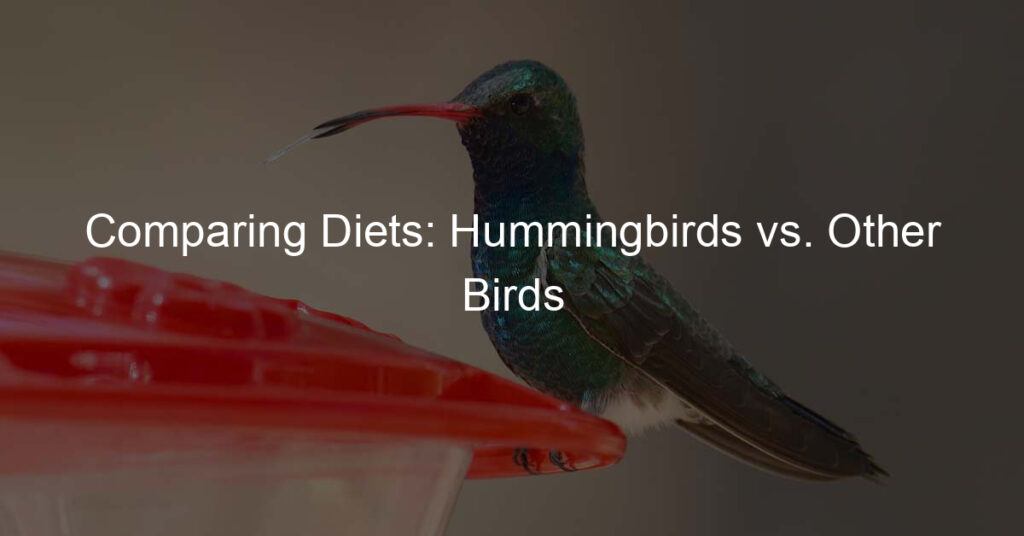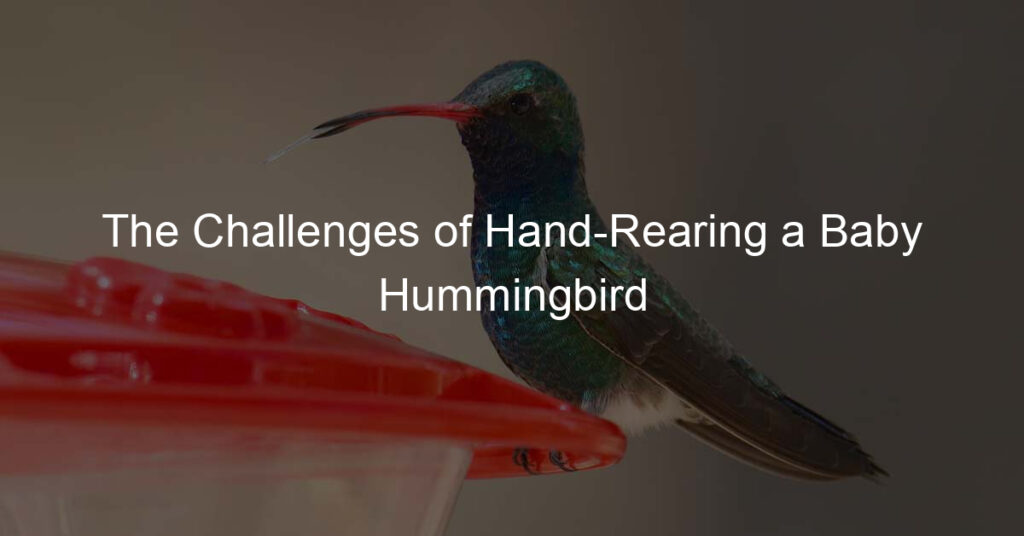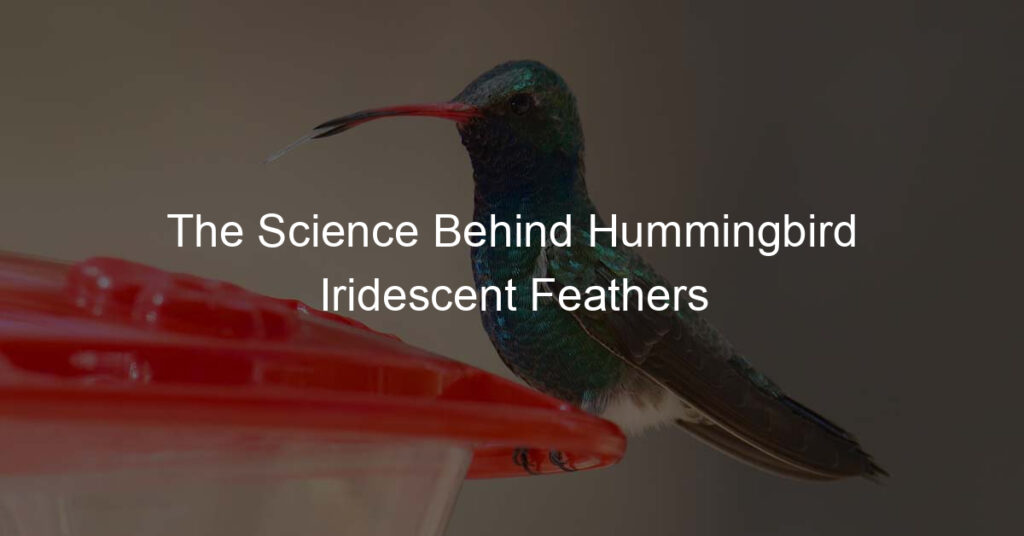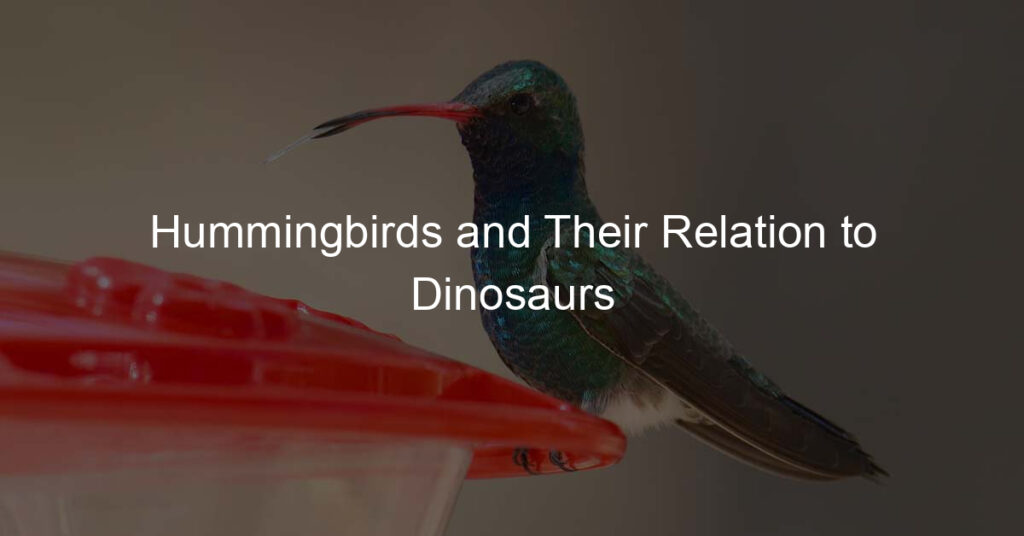Hummingbirds, despite their adorable size and iridescent colors, can sometimes exhibit aggressive behavior. This blog post delves into the reasons behind such behavior and offers practical solutions to manage and mitigate aggression in hummingbirds. It provides insights into their territorial nature, the role of feeders, and the importance of creating a conducive environment for these tiny creatures.
Understanding Hummingbird Aggression
Hummingbird aggression is a fascinating behavior that can sometimes be observed in these tiny, vibrant birds. To gain a better understanding of this phenomenon, it is important to delve into the factors that contribute to their aggression. Three key aspects to consider are territoriality, competition for resources, and mating rituals.
Territoriality is a natural instinct in hummingbirds, as they fiercely defend their feeding and nesting areas from intruders. This behavior ensures their survival by securing access to essential resources such as nectar and insects. When a rival hummingbird enters their territory, aggression may ensue as a means of protecting their valuable resources.
Competition for resources is another significant factor contributing to hummingbird aggression. As nectar-rich flowers become scarce, hummingbirds may encounter limited food sources, leading to heightened competition. This can result in aggressive behavior, as hummingbirds strive to outcompete others and secure their much-needed sustenance.
Mating rituals also play a role in hummingbird aggression. During the breeding season, male hummingbirds engage in elaborate courtship displays to attract females. These displays often involve high-speed chases and aerial acrobatics, creating an intense competitive atmosphere. Aggression may arise as males fiercely defend their chosen territories and attempt to ward off rival suitors.
Understanding these underlying factors helps us appreciate that hummingbird aggression is not random or malicious. Instead, it is a natural response driven by the need to survive and reproduce. By recognizing and respecting these behaviors, we can take steps to mitigate aggression and create a more harmonious environment for these remarkable birds.
Can A Hummingbird Be Aggressive? An In-depth Look
Hummingbirds, despite their small size and delicate appearance, can indeed exhibit aggressive behavior. While they are typically known for their grace and beauty, it is important to acknowledge that aggression is a natural aspect of their behavior.
One of the main reasons hummingbirds can be aggressive is their territorial nature. They fiercely defend their feeding and nesting areas, which they perceive as their own exclusive territories. This territorial behavior is essential for their survival as it ensures a stable food source and a safe place to raise their young.
Male hummingbirds, in particular, are known for their aggressive displays during the breeding season. They engage in high-speed chases and aerial battles to assert dominance and secure mates. These displays can be quite intense and may involve dive-bombing, vocalizations, and even physical contact.
Aggression in hummingbirds is not limited to interactions with other hummingbirds. They may also exhibit aggressive behavior towards other birds that encroach upon their territory, such as sparrows or finches. This can include chasing, pecking, and vocalizing to assert dominance and protect their resources.
It is important to note that hummingbird aggression is not always constant or relentless. It is primarily driven by specific triggers such as territorial disputes or competition for resources. Outside of these situations, hummingbirds can coexist peacefully and exhibit their more gentle side.
The Role of Feeders in Hummingbird Aggression
Feeders play a significant role in hummingbird aggression. These artificial nectar sources can create intense competition among hummingbirds, leading to territorial disputes and aggressive behavior. When multiple feeders are placed close together, it can create a concentrated food source, attracting a larger number of hummingbirds to a smaller area. This increased competition can escalate aggression as hummingbirds fiercely guard their access to these valuable resources.
Moreover, the design and placement of feeders can also contribute to aggression. Feeders with multiple feeding ports or perches can accommodate more hummingbirds simultaneously, reducing the need for aggressive behavior. Additionally, hanging feeders in open spaces without any nearby perches or natural barriers can create an environment where hummingbirds feel more vulnerable and are more prone to aggression.
It is essential to consider the number and spacing of feeders to minimize aggression. Providing an adequate number of feeders, especially during peak feeding times, can reduce competition. Spacing out the feeders throughout your yard or garden allows hummingbirds to establish their own territories and reduces the need for aggressive encounters.
Choosing feeders with features that discourage aggression can also be beneficial. Look for feeders that have built-in perches or those with fewer feeding ports, as this can discourage overcrowding and minimize aggressive behavior. Additionally, using feeders with bee guards or ant moats can help deter unwanted visitors, reducing the potential for aggressive interactions.
Does Season Affect Hummingbird Behavior?
Yes, the season does indeed affect hummingbird behavior. Hummingbirds are migratory birds, and their behavior changes based on the seasons and the availability of food sources. In the spring and summer months, when flowers are in full bloom and nectar is abundant, hummingbirds tend to be more peaceful and less aggressive. This is because they have access to a wide variety of natural food sources, reducing the need to compete for artificial feeders.
However, as the seasons transition into fall and winter, nectar-producing flowers become scarce, and hummingbirds become more reliant on artificial feeders for their sustenance. This increased dependence on feeders can lead to heightened competition and aggression among hummingbirds. As the number of available food sources decreases, hummingbirds may become more territorial and aggressive in their efforts to secure a reliable food supply.
Furthermore, the availability of natural food sources and the migration patterns of hummingbirds vary depending on geographical location. In areas where hummingbirds are present year-round, such as parts of the southern United States, their behavior may not change significantly with the seasons. However, in regions where hummingbirds migrate, their behavior can be greatly influenced by the changing seasons and their instinctual need to prepare for long-distance journeys.
"Territoriality: A Survival Instinct"
Territoriality is a natural and instinctive behavior observed in many animal species, including hummingbirds. This behavior is driven by the need to secure limited resources, such as food, nesting sites, and mates. Hummingbirds establish territories to defend these valuable resources and ensure their survival.
When it comes to hummingbirds, males are particularly territorial. They fiercely guard their chosen feeding areas and nesting sites from other males and even larger birds. This territorial behavior is often more pronounced during the breeding season when competition for mates and nesting sites is at its peak.
The size of a hummingbird's territory can vary depending on the available resources. In areas with abundant food sources, territories may be smaller and overlap with other hummingbirds' territories. However, in regions with limited resources, territories may be larger and more fiercely defended.
The territoriality of hummingbirds is evident in their aggressive displays. Male hummingbirds engage in aerial battles, chasing each other and engaging in high-speed dives and impressive mid-air acrobatics. These displays are meant to intimidate rivals and establish dominance. The winner of these battles gains access to the prime feeding areas and has a higher chance of attracting a mate.
Understanding territoriality in hummingbirds is crucial for managing aggression. By providing multiple feeding stations and spacing them out effectively, we can help minimize territorial disputes and give each hummingbird a fair chance at accessing food. Additionally, planting a variety of nectar-rich flowers can disperse feeding opportunities and reduce competition around feeders.
How to Space Out Feeders Effectively?
To effectively space out feeders and reduce aggression among hummingbirds, there are a few key considerations to keep in mind. By following these guidelines, you can create a harmonious feeding environment for these beautiful creatures.
- 1. Distance between feeders:
It is essential to ensure that feeders are placed at a sufficient distance from each other. This helps minimize territorial disputes and allows each hummingbird to have its own feeding space. Experts recommend spacing feeders at least 10-15 feet apart. This distance provides enough separation to reduce competition and aggression. - 2. Visibility of Feeders:
Hummingbirds are highly visual creatures, and they rely on sight to locate food sources. When placing feeders, ensure that they are visible from a distance. This will prevent hummingbirds from accidentally stumbling upon each other's territories, reducing the likelihood of aggression. Placing feeders near open spaces or in clear view from different angles can make them easily noticeable to hummingbirds. - 3. Creating Feeder Zones:
To further minimize aggression, consider creating different feeder zones. Each zone can consist of multiple feeders placed in close proximity to one another. By clustering feeders in specific areas, you can create separate feeding territories for hummingbirds. This allows them to establish their own space and reduces the need for constant territorial defense.When spacing out feeders, it's important to monitor the feeding activity and make adjustments as needed. If you notice increased aggression or constant battles, try repositioning or relocating the feeders. Experimenting with different placements can help find the optimal setup that promotes peaceful coexistence among hummingbirds.
Creating Natural Barriers: A Practical Solution
One effective solution to reduce aggression among hummingbirds is to create natural barriers in your garden. These barriers can help define territories and provide visual obstacles that discourage aggressive behavior. Here are a few practical ways to create natural barriers:
- 1. Planting Dense Shrubs and Bushes:
By strategically planting dense shrubs and bushes around your feeders, you can create physical barriers that limit hummingbird visibility. Choose plants with thick foliage that can obstruct the line of sight between feeders, making it harder for one hummingbird to spot another. This can help reduce the likelihood of territorial disputes and aggression. - 2. Utilizing Hanging Baskets or Trellises:
Hanging baskets or trellises with trailing plants can serve as natural dividers between feeders. These vertical structures can help create visual boundaries, giving each hummingbird a sense of its own feeding area. Choose plants with abundant flowers to attract hummingbirds while also providing a natural barrier. - 3. Incorporating Water Features:
In addition to creating physical barriers, incorporating water features into your garden can also help reduce aggression among hummingbirds. Installing a small birdbath or a shallow fountain can attract hummingbirds to different areas of your garden, diverting their attention from feeders. The sound of running water can create a calming effect and promote a more peaceful atmosphere.
Why Should We Avoid Red Dye in Hummingbird Feeders?
Using red dye in hummingbird feeders may seem like a tempting idea to attract these tiny birds, but it is important to understand the potential risks and why it is best to avoid it. First, red dye is often made from artificial chemicals that can be harmful to hummingbirds. These chemicals can potentially disrupt their delicate digestive systems and overall health. Additionally, red dye can stain their feathers, making it difficult for them to camouflage and potentially attracting predators.
Furthermore, there is no scientific evidence to suggest that red dye is necessary to attract hummingbirds. These birds are naturally attracted to the color red, so the bright red color of the feeder itself is sufficient to catch their attention. In fact, many commercial hummingbird nectar mixes are already dyed red, so adding additional dye is simply unnecessary.
To ensure the health and well-being of hummingbirds, it is best to opt for a natural approach when it comes to attracting them to your feeder. Stick to a simple and safe homemade nectar solution of four parts water to one part white granulated sugar. This mimics the natural nectar found in flowers and provides the necessary nutrients for hummingbirds without any harmful additives.
The Impact of Human Interaction on Hummingbird Behavior
Human interaction can have a significant impact on hummingbird behavior, both positive and negative. These tiny creatures are highly sensitive to their surroundings and can be influenced by the actions of humans. Understanding and being mindful of our interactions with hummingbirds is crucial for their well-being and overall conservation efforts.
- 1. Feeder Placement and Maintenance:
The placement and maintenance of hummingbird feeders can greatly affect their behavior. Placing feeders in quiet and safe locations, away from high human traffic areas, can reduce stress and allow the birds to feed undisturbed. Regular cleaning and refilling of feeders are also essential to prevent the growth of harmful bacteria, which can negatively impact hummingbird health and behavior. - 2. Noise and Disturbance:
Hummingbirds have keen hearing and can be easily startled by loud noises or sudden movements. Excessive noise from human activities, such as construction or loud music, can disrupt their feeding and nesting routines. It is important to be mindful of noise levels and try to create a peaceful environment for these delicate creatures. - 3. Respect for their Space:
Hummingbirds are territorial by nature and may become agitated if they feel their space is being invaded. Approaching too closely or trying to touch them can cause stress and potentially lead to aggressive behavior. It is important to maintain a respectful distance and observe them from a distance, allowing them to carry out their natural behaviors without interference.
Is There a Role for Decoys in Managing Aggression?
Decoys can potentially play a role in managing aggression among hummingbirds. These visual cues can help redirect their territorial behavior and reduce aggression towards other hummingbirds. By strategically placing decoys, we can create the illusion of additional territories, providing more space for hummingbirds to establish their own territories without constant conflicts. Additionally, decoys can also serve as a distraction, diverting aggressive hummingbirds' attention away from actual feeders or nesting areas.
It is important to note that the effectiveness of decoys in managing aggression may vary depending on the specific situation and the behavior of the hummingbirds in question. Some hummingbirds may be more responsive to decoys than others, and it may take time for them to recognize and accept the presence of decoys as part of their environment.
When using decoys, it is crucial to choose ones that closely resemble hummingbirds in size, shape, and coloration. Realistic decoys are more likely to be recognized as potential competitors by aggressive hummingbirds, increasing the chances of successful behavior redirection. Additionally, regularly moving the decoys around can help maintain their effectiveness, as hummingbirds may become accustomed to their presence if they remain stationary for extended periods.
Can Music Influence Hummingbird Behavior?
The idea of music influencing hummingbird behavior may seem intriguing, but the scientific evidence supporting this notion is limited. While some anecdotal accounts suggest that hummingbirds may be attracted to certain types of music or sounds, there is no conclusive research to confirm this.
Hummingbirds primarily rely on visual cues and vocalizations for communication and navigation. Their perception of sound is different from humans, as they have a higher range of hearing and are more attuned to specific frequencies. This means that the music we find pleasant may not have the same effect on hummingbirds.
However, it is worth noting that certain sounds, such as those mimicking natural hummingbird vocalizations or the buzzing of their wings, may pique their curiosity or elicit a response. Some bird enthusiasts have experimented with playing recordings of hummingbird sounds near feeders, hoping to attract or engage the birds. While these efforts may create interesting observations, they should be approached with caution to avoid causing stress or disturbance to the hummingbirds.
Ultimately, the impact of music on hummingbird behavior remains uncertain. It is essential to prioritize the well-being of these delicate creatures by providing them with a suitable habitat, proper nutrition, and minimizing disturbances. Focusing on creating a peaceful and natural environment will likely have a more significant impact on their behavior and overall well-being than attempting to influence them with music.
Maintaining a Serene Ambiance for Hummingbirds
Creating a serene ambiance for hummingbirds is crucial for their well-being and to encourage their peaceful behavior. Here are some tips to help maintain a tranquil environment for these enchanting birds:
- – Provide ample vegetation:
Hummingbirds thrive in areas with abundant foliage and flowers. Plant a variety of native flowering plants that bloom at different times of the year to ensure a continuous food source. This will not only attract hummingbirds but also create a calming and natural atmosphere. - – Minimize disturbances:
Hummingbirds are sensitive to noise and sudden movements. Avoid loud noises, excessive human activity, and sudden movements around their feeding areas. This will help create a peaceful environment that allows the birds to feed and rest undisturbed. - – Reduce predator risks:
Create a safe environment for hummingbirds by minimizing potential threats. Place feeders and plants close to natural cover such as trees or shrubs, providing them with a quick escape route. Regularly check for any signs of predators, such as cats or larger birds, and take appropriate measures to deter them. - – Avoid the use of pesticides:
Pesticides not only harm insects, which are an essential food source for hummingbirds, but they can also be toxic to the birds themselves. Opt for natural pest control methods or choose organic gardening practices to maintain a healthy and pesticide-free environment. - – Provide clean water sources:
Hummingbirds need access to clean and fresh water for drinking and bathing. Install a shallow birdbath or a water mister near their feeding areas. Ensure that the water is changed regularly to prevent the growth of harmful bacteria.
Let's Coexist: Lessons for a Harmonious Living
In our pursuit to find solutions for hummingbird aggression, it is important to remember that we share this planet with a diverse range of creatures. Coexisting harmoniously with hummingbirds requires understanding and respect for their natural behaviors. Here are some valuable lessons we can learn:
First, patience is key. Hummingbirds may exhibit territorial behavior, but it is essential to give them space and time to establish their territories without interference. By observing from a distance, we can appreciate their remarkable displays of strength and agility.
Secondly, education is crucial. Understanding the biology and behavior of hummingbirds can help us make informed decisions about creating an environment that meets their needs. By learning about their migration patterns, feeding habits, and nesting preferences, we can provide the ideal conditions for their survival and well-being.
Furthermore, let's focus on conservation efforts. Protecting and preserving the habitats where hummingbirds thrive is vital. Support local conservation organizations, participate in citizen science initiatives, and advocate for the preservation of natural spaces. By working together, we can ensure a sustainable future for these beautiful creatures.
Finally, let's embrace eco-friendly practices. Reduce the use of pesticides and opt for natural alternatives in gardening. Plant native flowers and maintain a sustainable garden that attracts hummingbirds and other pollinators. By creating a welcoming environment for these birds, we contribute to the overall health of our ecosystem.
Dealing with aggressive hummingbirds can be a challenge, but understanding their behavior can help significantly in managing it. By adopting strategies such as spacing out feeders, creating natural barriers, and maintaining a serene ambiance, we can ensure a harmonious coexistence with these beautiful birds. Remember, a little bit of patience and a lot of love for nature can create a world of difference.







